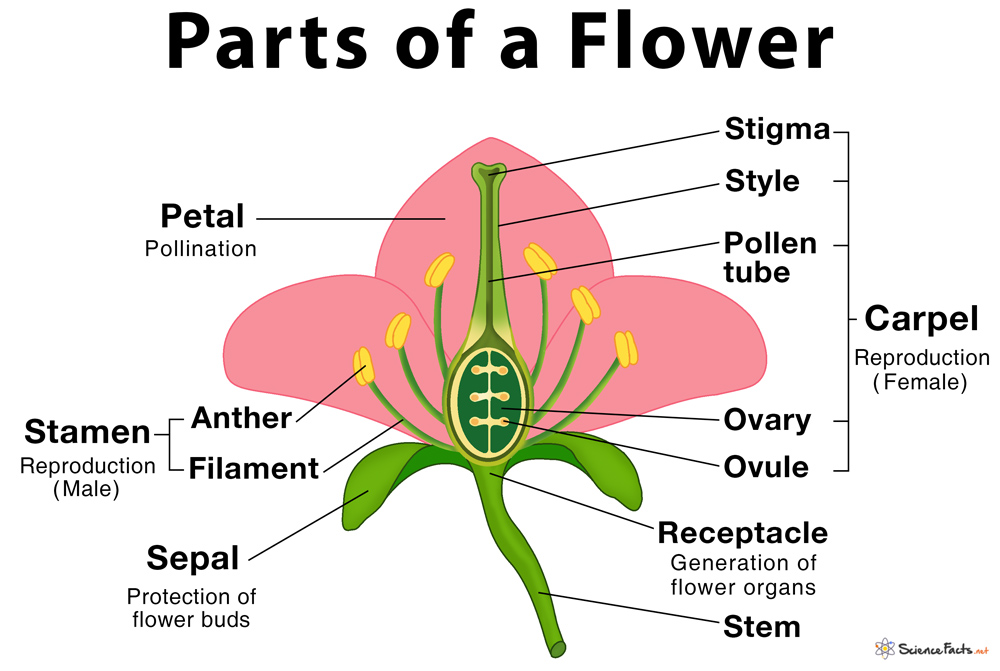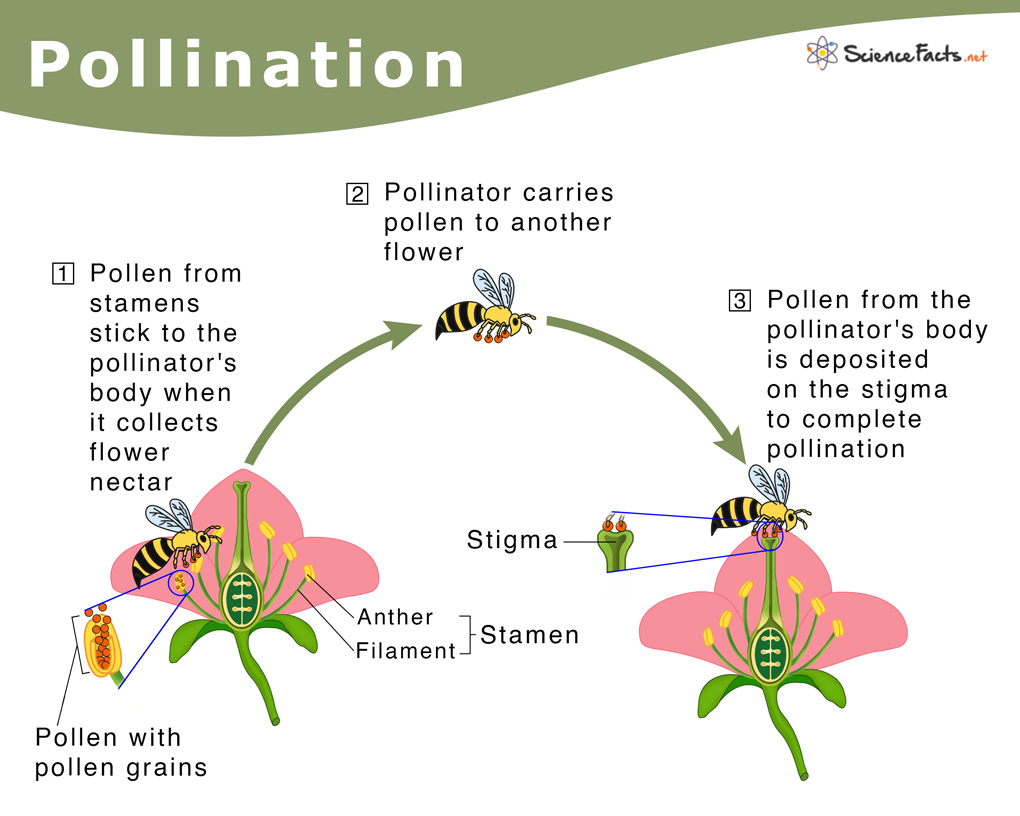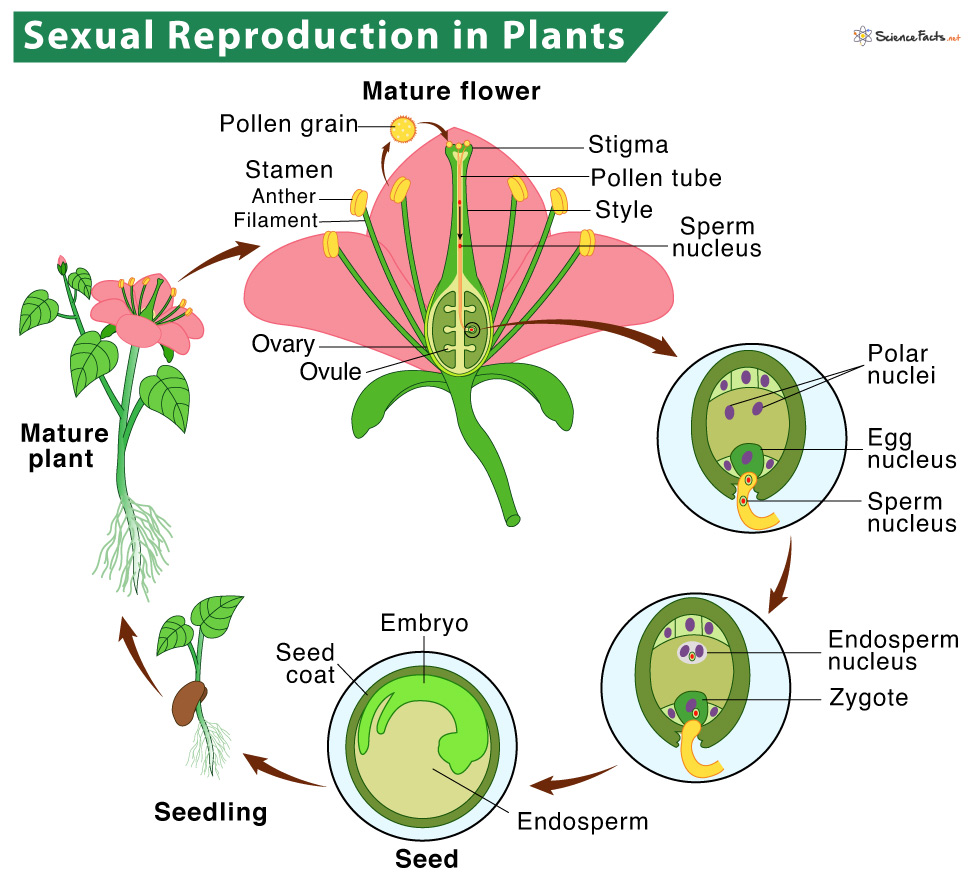Reproduction in Plants
What is Reproduction in Plants
Reproduction is the biological process of producing offspring of the same type and species. Like any other living being, plants also need to reproduce to continue their race by passing on their genes to future generations.
Plants reproduce in two ways: 1) sexual and 2) asexual.
1) Sexual Reproduction
Sexual reproduction involves the participation of two parents. Here, offspring are produced by combining the genetic material of male and female sex cells or gametes through fertilization. As a result of genetic recombination, it provides variation to the plant progeny that helps in better survival. Also, it helps it to gain its uniqueness within the species and remove the unwanted genes.
Reproduction in Flowering Plants (Angiosperms)
In angiosperms or flowering plants, the flower is the reproductive organ. They bear flowers, fruit-covered seeds and reproduces via double fertilization. The sporophyte stage dominates their life cycle.
Their Reproductive Structure and Parts
A typical flower bears four main parts or whorls: sepal, petal, stamen, and corolla. Among these, stamen and carpel are called the male and female reproductive organs of the plant, whereas sepal and petal are the accessory parts.
1) Sepal – It is usually green in color and protects the flower bud. Sepals are collectively called calyx.
2) Petal – As it is usually brightly colored, it attracts the pollinators for pollination. Collection of petals is called corolla.
3) Stamen – It consists of anthers and filaments. Anthers are bilobed structures containing microsporangia, that produce microspores, which develop into male gametophytes or pollen. Filaments are supporting structures connecting the anthers to the flower base. Several stamens are collectively called androecium.
4) Carpel – It consists of stigma, style, and ovary. The ovaries comprise the megasporangia that produce the megaspores, which develop into female gametophytes or embryo sac. The stigma is the site of pollen deposition by wind or pollinators. The style is the long tube connecting the stigma to the ovary. A collection of carpels is termed as gynoecium.
Process of Reproduction
In flowering plants, reproduction occurs in two steps: pollination and fertilization.
1. Pollination
Pollination is the deposition or transfer of pollen from anther to the stigma of the same flower or another flower.
In angiosperms, the male and female gametes are produced in the pollen grain and embryo sac, respectively. As both of the gametes are non-motile, they are brought together by pollination for fertilization to occur.
Depending on the pollen source, pollination can be of two types:
i. Self-Pollination: It happens when the pollen gets deposited from anther to the stigma of the same flower (autogamy) or another (geitonogamy) of the same plant.
It happens in such flowers where the stamen and carpel mature simultaneously and are positioned so that the pollen can easily land on the stigma. This method of pollination does not require any investment from the plant to provide nectar and pollen as food for pollinators.
This process produces plants with less genetic diversity since genetic material from the same plant is used to form gametes, and eventually, the zygote.
ii. Cross-pollination: It is the transfer of pollen from the anther of one plant to the stigma of another plant (xenogamy) with the help of pollinating agents like water, air, and insects.
Unlike self-pollination, it leads to greater genetic diversity as it derives the microgametophyte and megagametophyte from different plants. As cross-pollination offers genetic diversity, plants have developed many ways to avoid self-pollination. For instance, the pollen and the ovary mature at different times in some species, whereas some flowers have developed physical barriers to prevent self-pollination.
2. Fertilization
After the pollen grain gets deposited on the stigma, it enters the style and triggers a series of events, eventually leading to double fertilization. This is the most important stage of sexual reproduction, as it leads to the formation of seeds, which give rise to new plants.
The process is as follows:
i. After the pollen gets deposited on the stigma, it germinates and grows through the style. The pollen or microspores contain two cells: generative cell and pollen tube cell.
ii. Among these two cells, the pollen tube grows to form the pollen tube, through which the generative cell travels.
iii. The style tissues supply the required water and oxygen for the pollen tube’s growth.
iv. In the interim, if the generative cell has not already split into two cells, it now divides mitotically to form two sperm cells.
v. The chemical signals secreted by the synergids present in the embryo sac guide the pollen tube. Upon reaching the embryo sac, it enters it through the micropyle.
vi. Out of the two sperm cells entered, one fertilizes the egg cell, forming a diploid zygote. At the same time, the other one fuses with the two polar nuclei, forming a triploid cell, developing into the endosperm. This endosperm serves as a source of nutrition for the developing embryo.
vii. These two fertilization events in angiosperms are collectively known as double fertilization.
viii. After fertilization gets over, the further entry of any sperm gets blocked.
ix. In the end, the fertilized ovule forms the seed, and the ovary becomes the fruit, usually enveloping the seed.
Stages of the Reproductive Cycle
Unlike most animals, plants show two distinct multicellular stages in their life cycles:
i. Haploid gametophyte
ii. Diploid sporophyte.
In the reproductive life cycle, the haploid gametophyte produces male and female gametes via mitosis. The mitosis then fuses to form a diploid zygote. The zygote thus formed develops into a mature multicellular diploid sporophyte. Upon reaching maturity, this diploid sporophyte produces spores by meiosis, which in turn produces the haploid gametophyte by mitosis. The newly formed gametophyte produces gametes, and thus the cycle continues. This phenomenon is called the alternation of generations.
Though most plants exhibit an alternation of generations in their life cycle, there are remarkable variations in different plant lineages, which is consistent with their evolutionary history. For instance,
- In seedless non-vascular plants, the haploid gametophyte is larger than the sporophyte. So, this is a gametophyte-dominated life cycle. Here, the sporophyte remains attached to and dependent on the gametophyte. Example: Bryophytes (mosses).
- In seedless vascular plants, the sporophyte is larger than the gametophyte. However, the gametophyte is free-living and independent from the diploid sporophyte. Example: Ferns.
Reproduction in Non-Flowering Plants (Gymnosperms)
Gymnosperms belong to the group of non-flowering plants. They reproduce from the seeds, which are not enclosed in any covering.
Like angiosperms, the life cycle of gymnosperms is also dominated by the sporophyte stage. The gametophyte attaches and remains dependent on the sporophyte.
Despite having sporophyte-dominated life cycles in both, angiosperms and gymnosperms differ in some ways. Angiosperms have flowers, fruit-covered seeds and undergo double fertilization. In contrast, gymnosperms do not have flowers. They have “naked” seeds and do not perform double fertilization.
2) Asexual Reproduction
Asexual reproduction requires genetic material only from one parent, producing genetically identical offspring, called clones. As these clones lack genetic diversity, they are more susceptible to disease and less adaptable to environmental changes.
An advantage of this reproduction is that the resulting plant matures faster. Since the new plant arises from an adult plant or its parts, it will also be sturdier than a seedling.
Plants like conifers, cycads, and Ginkgo reproduce asexually.
Types of Asexual Reproduction
There are two modes of asexual reproduction in plants:
Vegetative Propagation
In vegetative propagation, offspring grow from a part of the parent plant. The process of vegetative propagation differs among plants. A few examples are listed below:
- Some short underground stems, such as garlic, onions, and tulips, reproduce by true bulbs.
- Potato plants reproduce using tubers. They produce new plants from stems or growing points called eyes.
- Crocuses reproduce using corms that are similar to true bulbs.
- Strawberry plants reproduce using branch-like structures called stolons. These structures anchor themselves to the ground and develop roots, from where new plants grow.
- Ginger plants reproduce using rhizomes. These stems grow sideways along with the soil or just below the surface those branches apart to produce new growth points.
Fragmentation
Fragmentation is another common type of asexual reproduction. Here, new plants are grown from parts of the parent plant that fall to the ground, like a fallen leaf or broken stem. Plants like liverworts and mosses reproduce in this way. Horticulturists, who study plants, often use asexual reproduction through fragmentation to grow new plant varieties.
FAQs
Ans. Seed plants carry out long-distance reproduction by animals, rain, wind, or pollen.
Ans. Asexual reproduction produces plants that are genetically identical.
-
References
Article was last reviewed on Thursday, February 10, 2022






